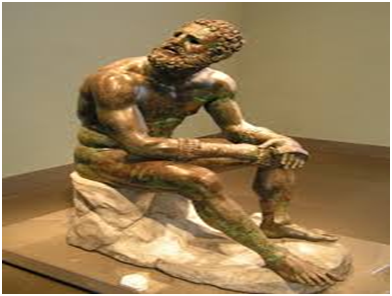Bronze has been used since ancient times in Europe for the production of tools, weapons and works of art. This method of sculpting continued through the Medieval period and the 15th century saw an active revival of methods used by the ancient Greeks and Romans, called the Renaissance. Bronze is an alloy containing copper and tin and can also contain lead or zinc. It is perfect for sculpting due to its strength and durability and the fact that it can capture fine, delicate details in a casting mould.
Casting a bronze sculpture can be done using two different methods. Sand casting involves the use of moulds packed with fine sand. Lost wax casting is more complex and involves using wax models. Either the original wax model is used and therefore destroyed or plaster moulds are taken from the original wax and can then be used many times again. For Bronze animal sculptures, visit http://www.gillparker.com/.
Depending on the make up of the alloy used, the appearance of bronze can vary. Lacquers, either organic or chemical can create various colours including black, reddish-brown and green. Bronze can also be gilded by using a paste of milled gold and mercury which is then spread over the sculpture and heated up. This fuses the gold to the surface and burns off the mercury. This fire-gilding method has been banned in most countries due to the toxicity of mercury vapour so gold lacquer can be used instead but it is not as permanent.

Other materials that are used in sculpture include stone. In the past, different stone was used in different regions due to local availability. Marble was commonly used in Italy and then exported to northern Europe from the 16th century onwards. It is quite a brittle stone and so connecting supports are often used to connect extremities to the main body of the work of art. Limestone was also used in other regions with alabaster being popular in England, France, Germany and Spain.
Stone-carving tools have not changed much since ancient times. A mason’s axe is still used to cut out the basic shape, which is then made finer by using a hammer or mallet. A variety of different sized tools are required at different stages. Bigger tools leave uneven grooves whereas a chisel is used to achieve the finer details of the work. The final stage would involve polishing the stone and marble and alabaster were polished using pumice which gave the sculpture a smooth, translucent appearance.
Another material used in the past was ivory. It is a hard, cream coloured substance formed on the tusks of elephants, walrus and whales. This was a highly regarded material and has been used since the 10th century in western and northern Europe. Animal bones were also used in Italy. The main source of ivory was elephant tusks from North Africa and India but thankfully these animals are now protected. The international ivory trade has been effectively banned since 1990 but traders can still export material harvested before that date.